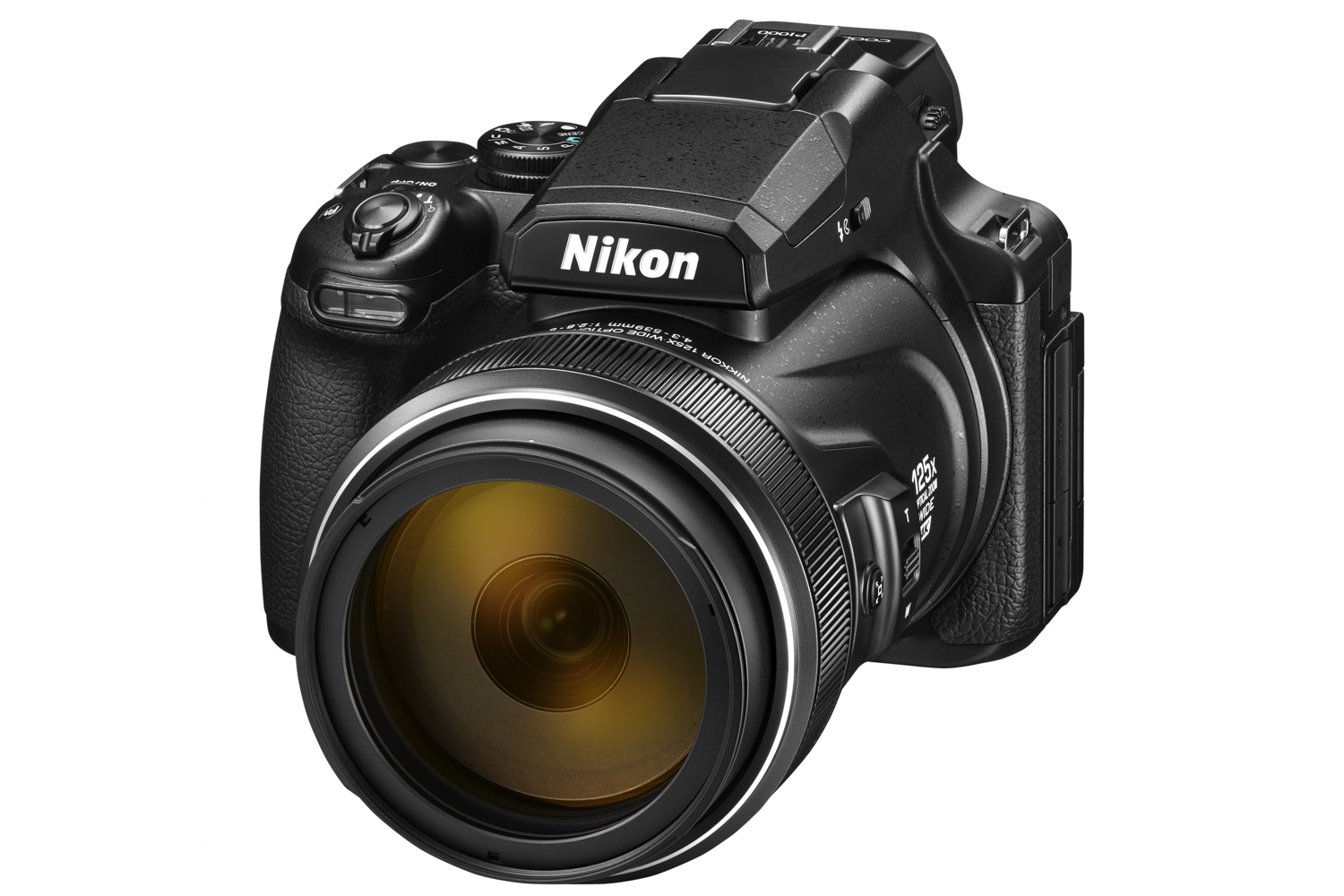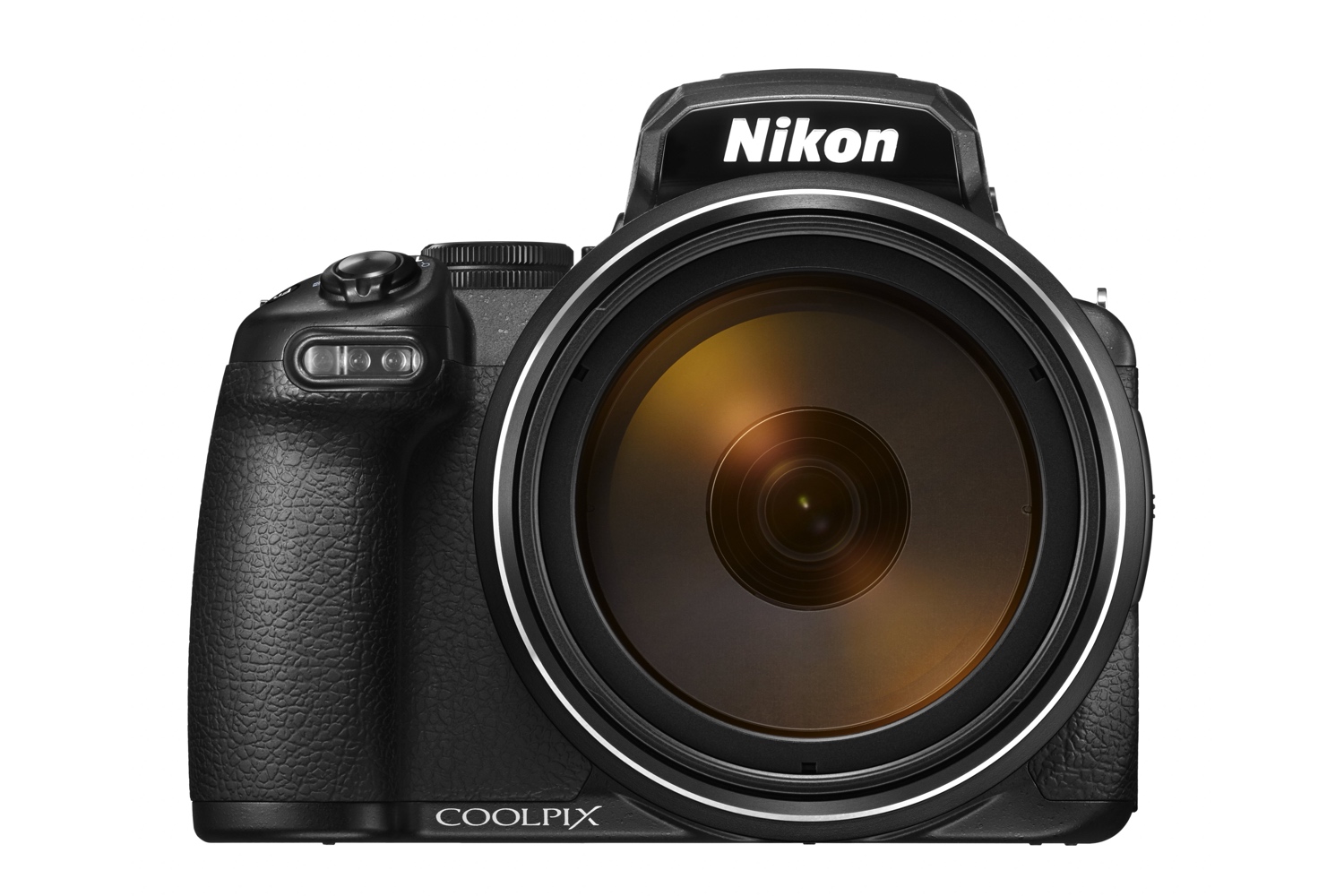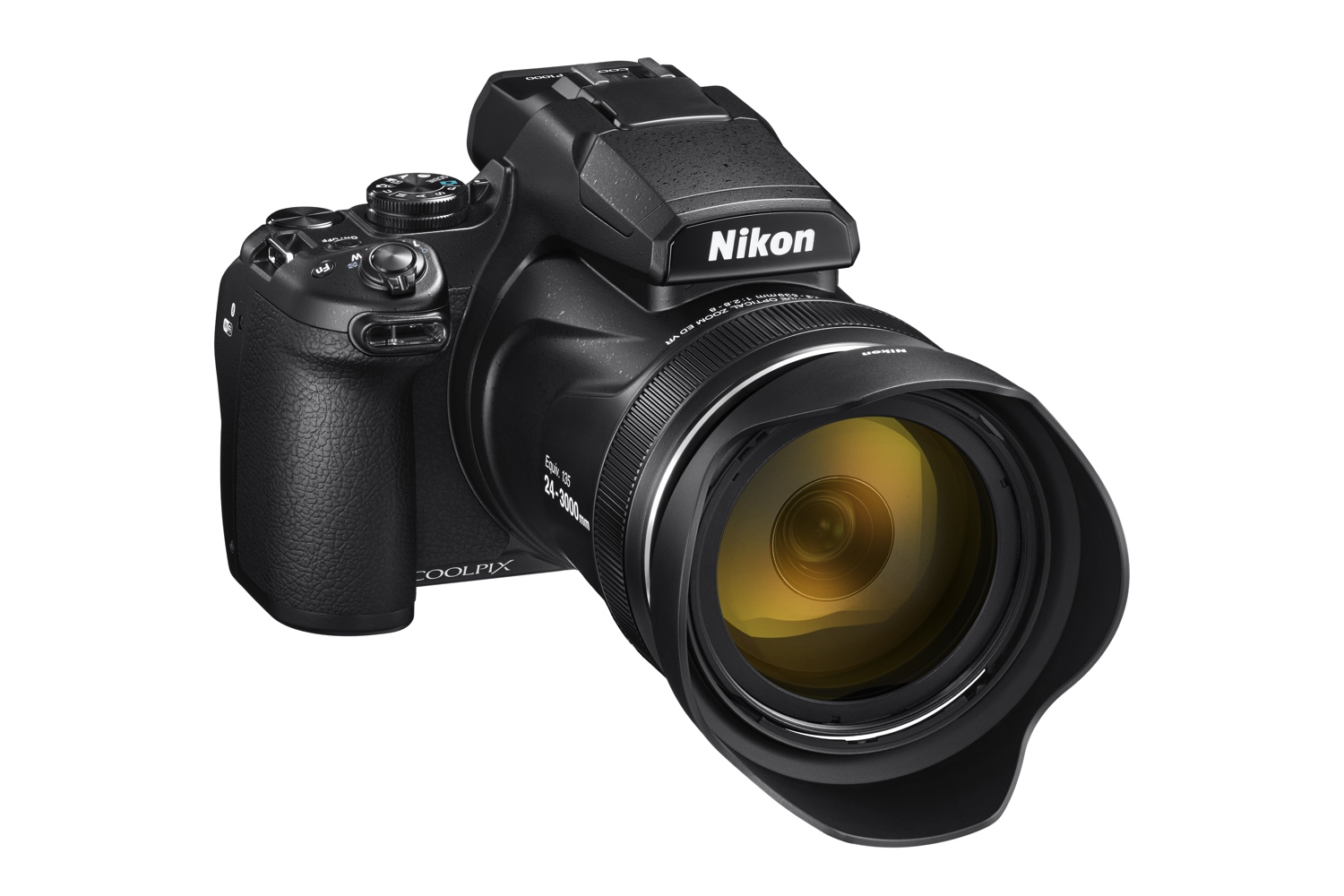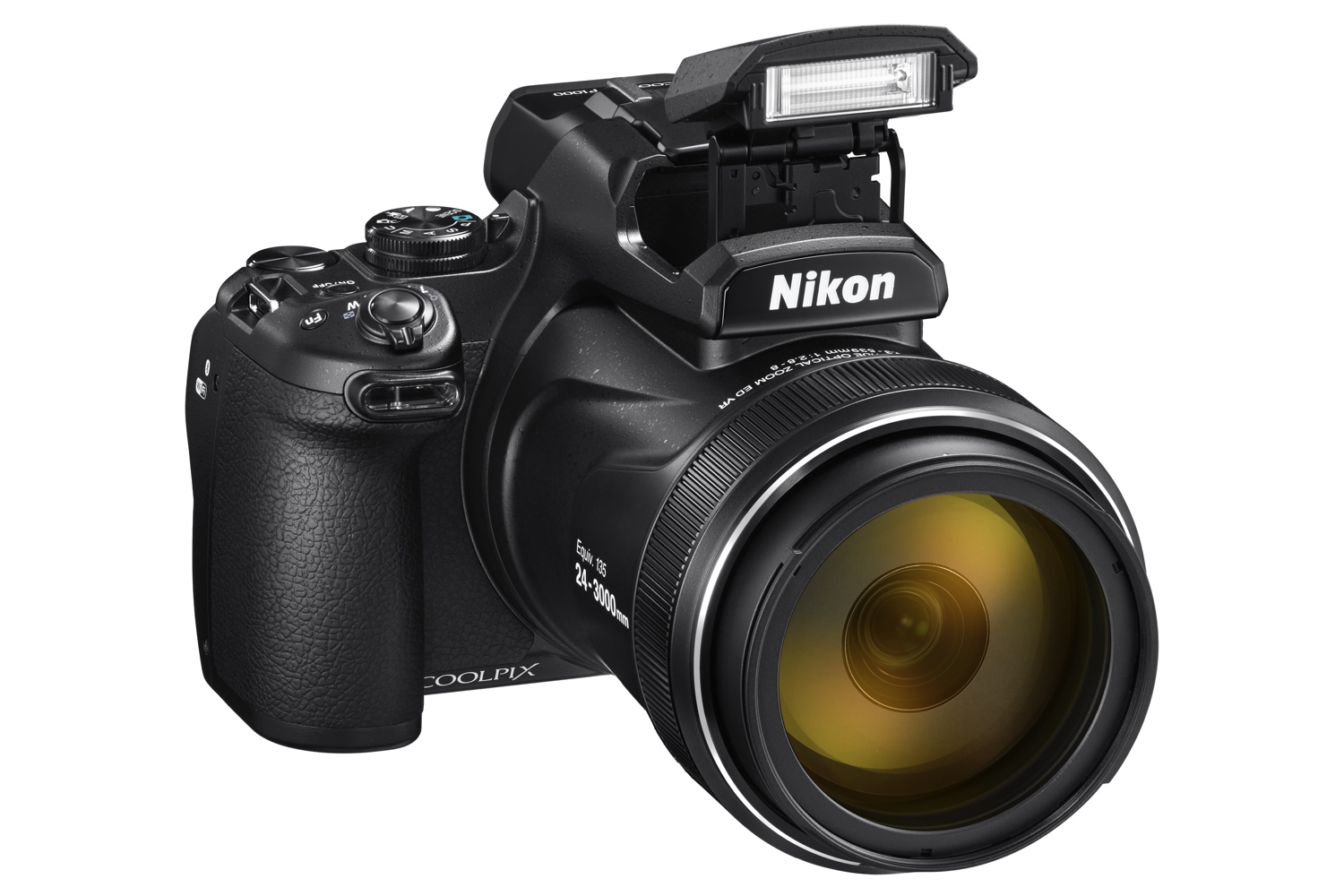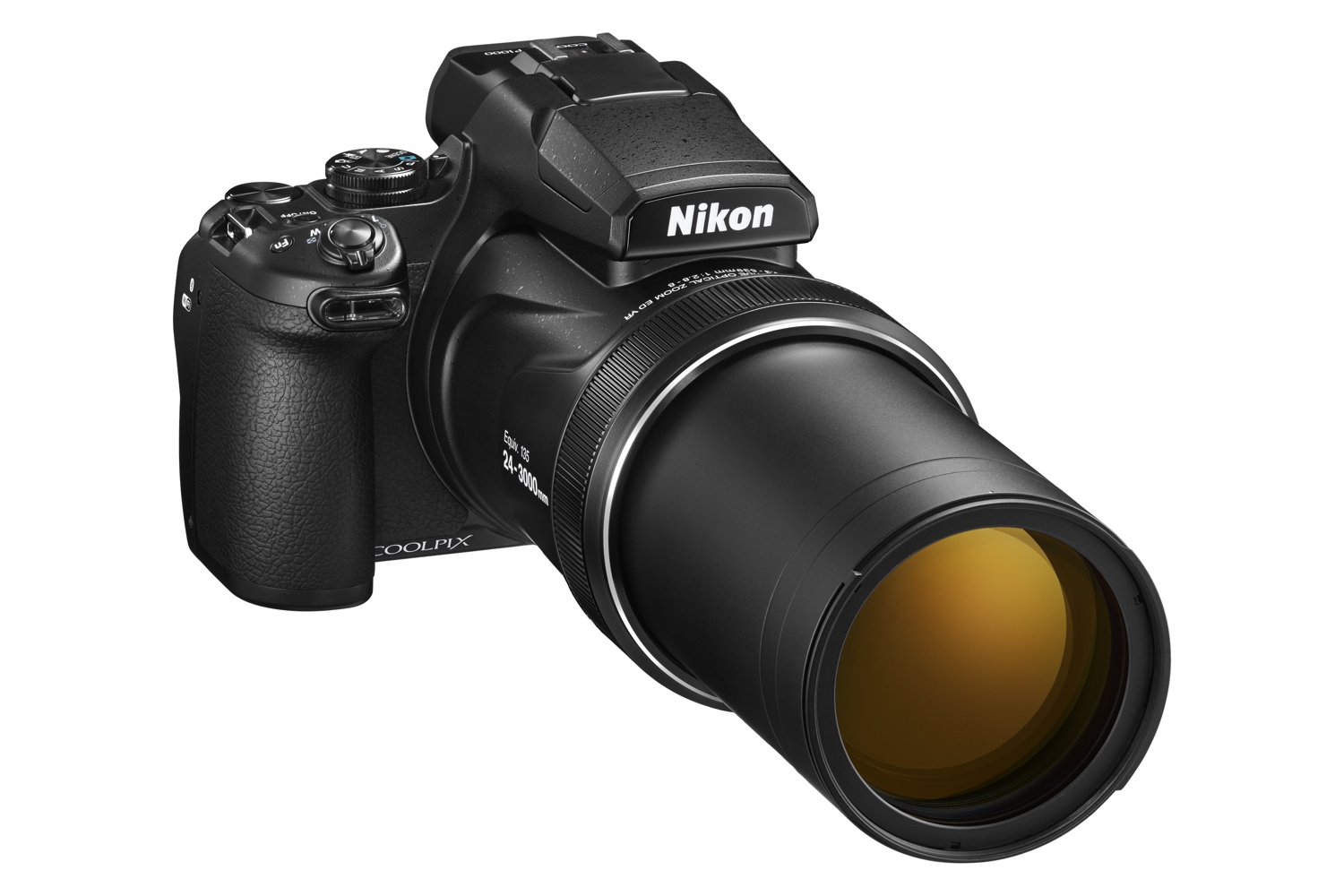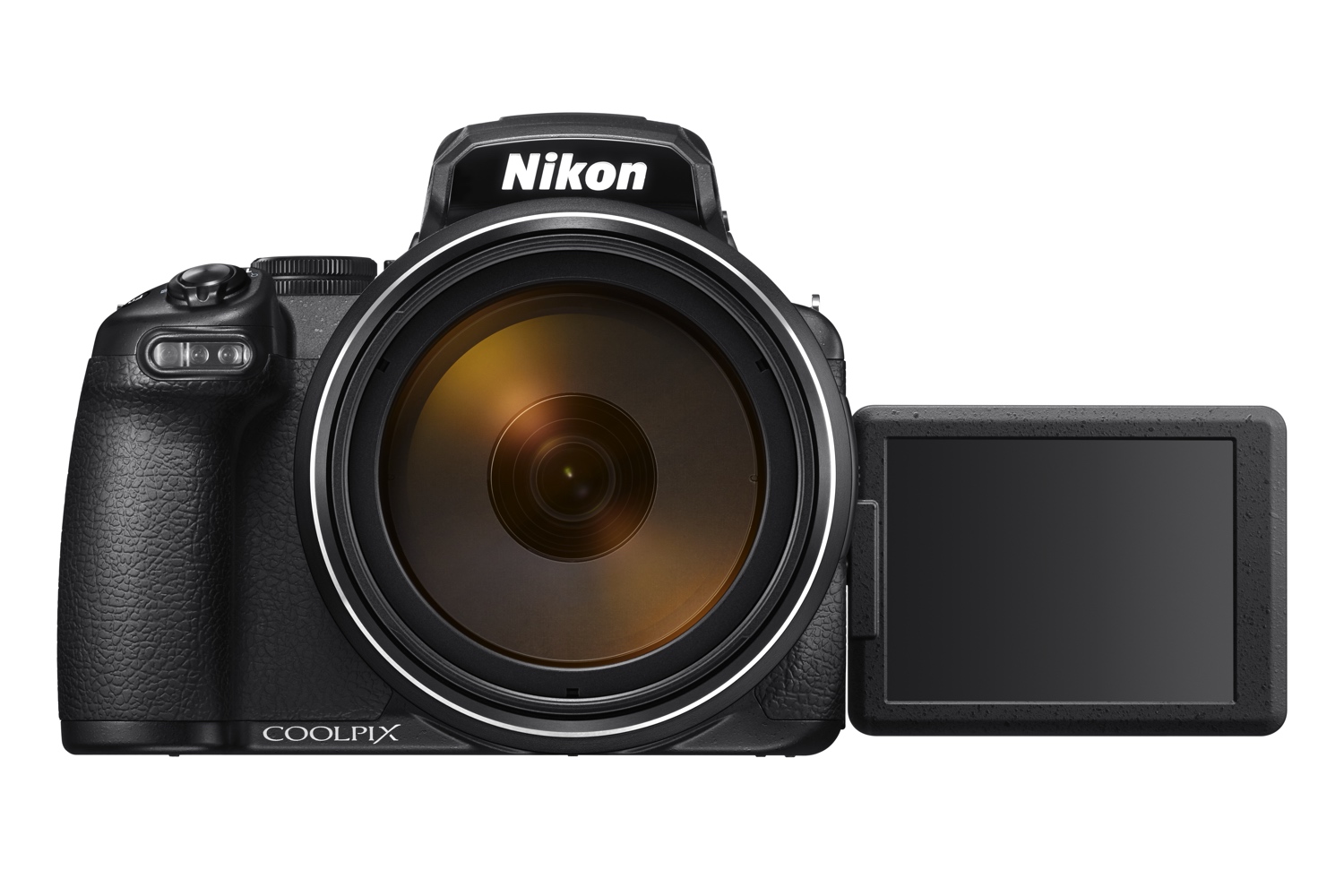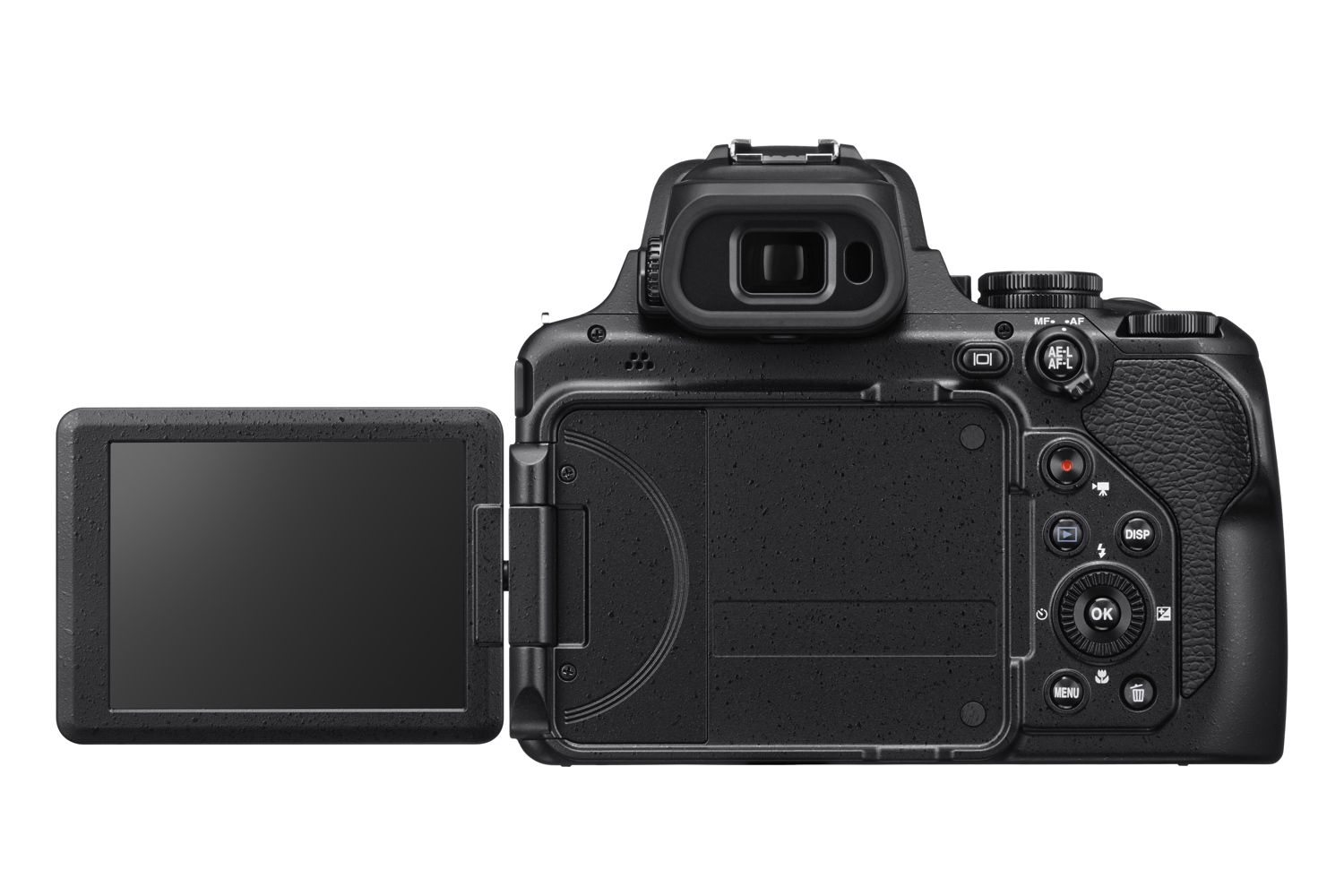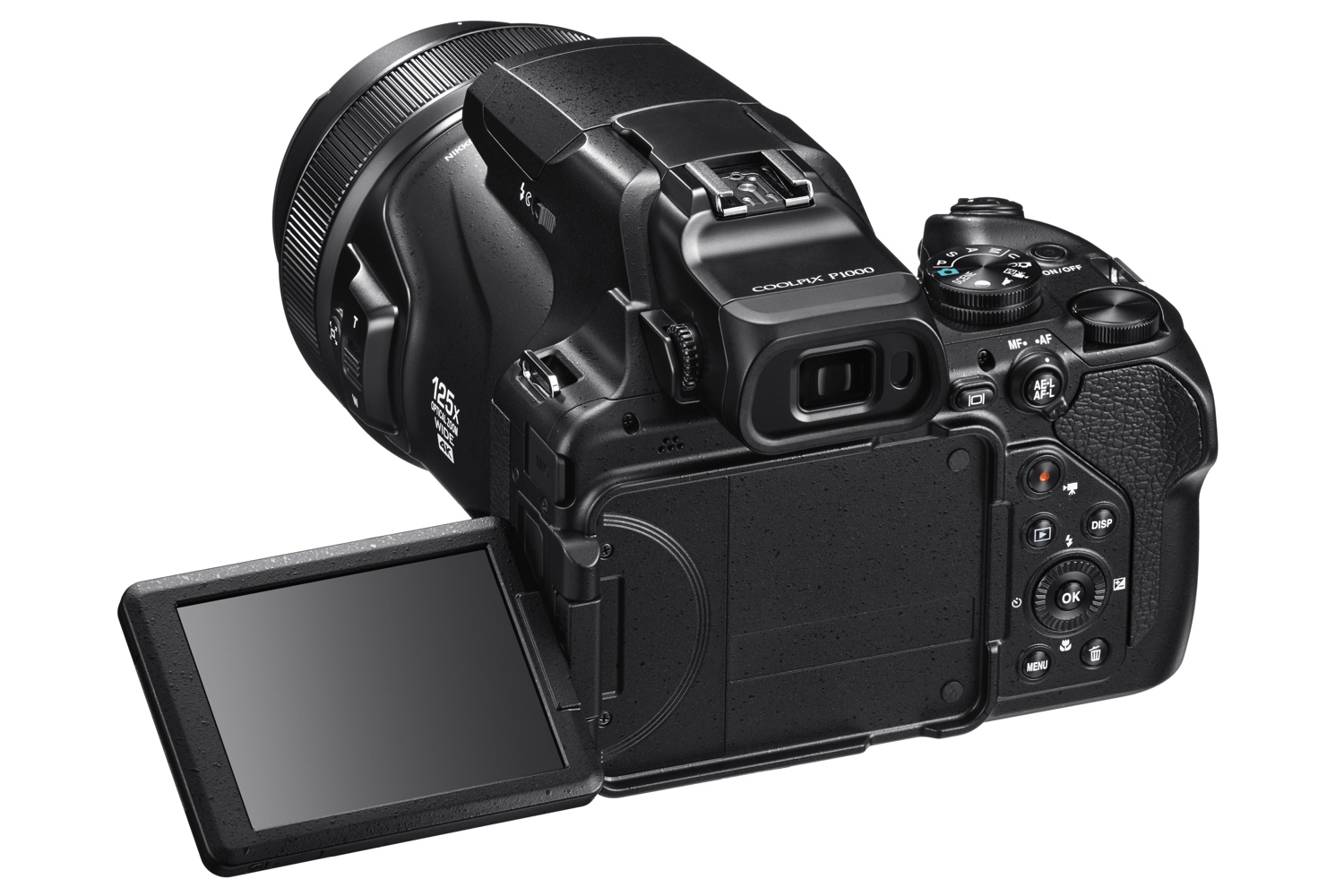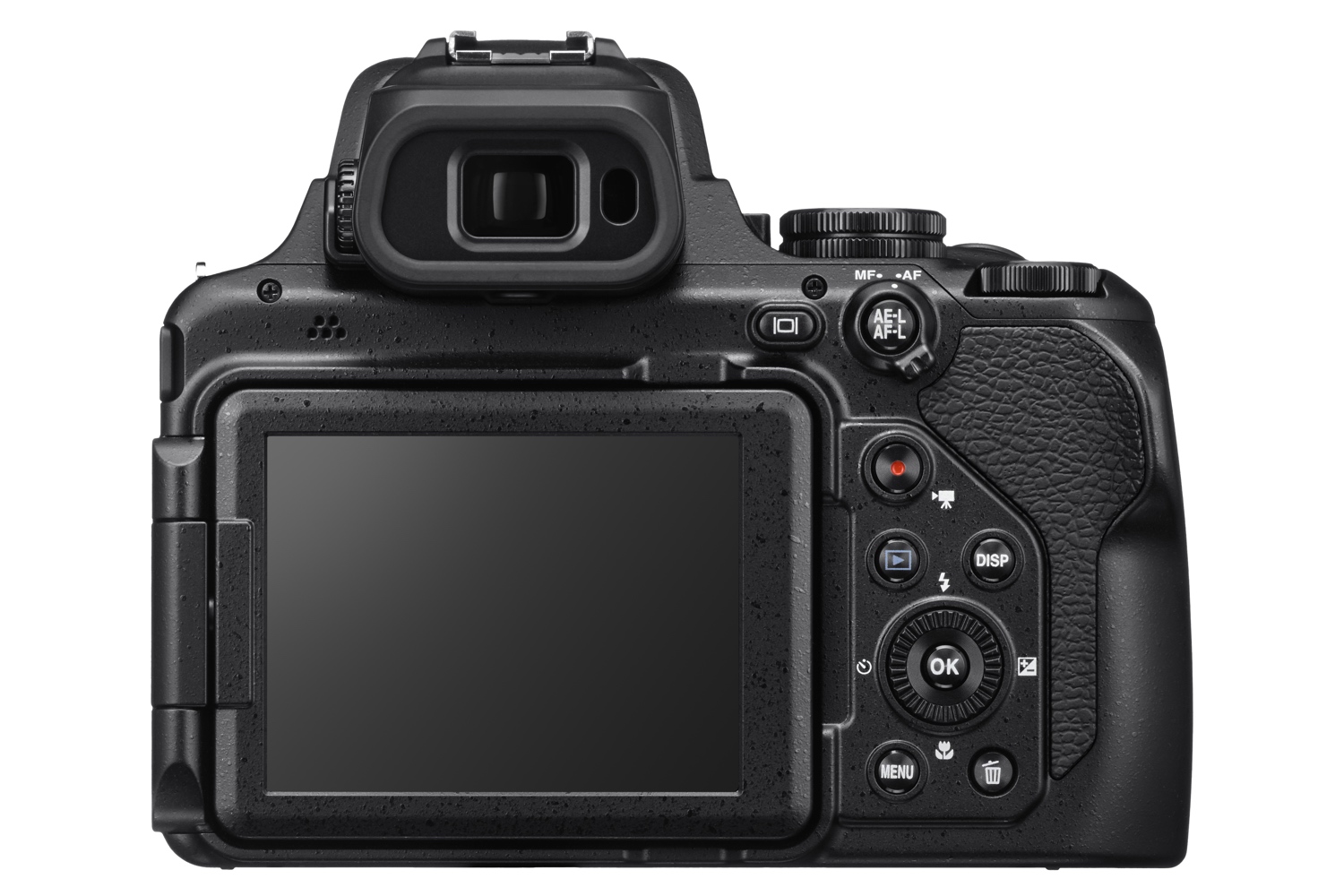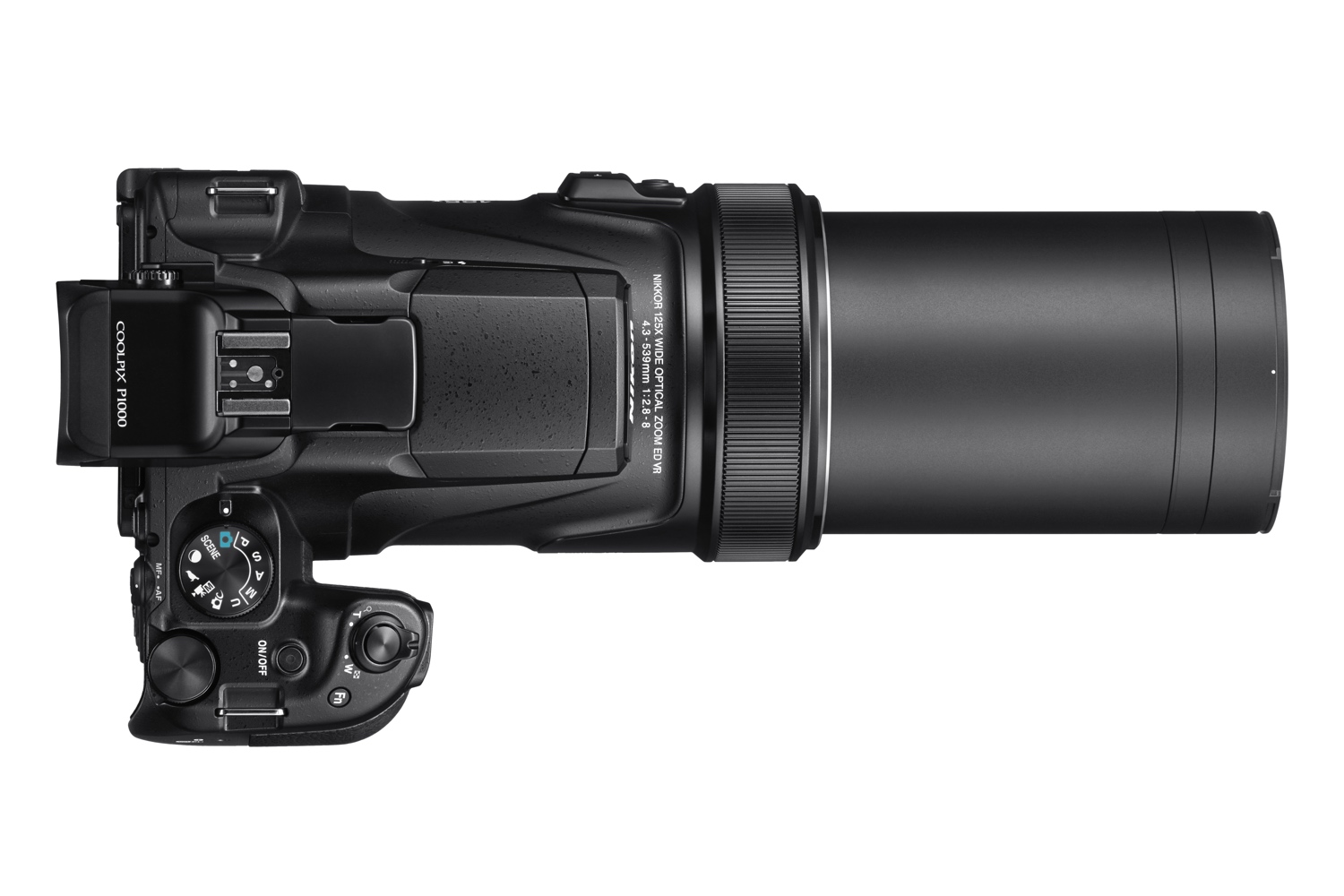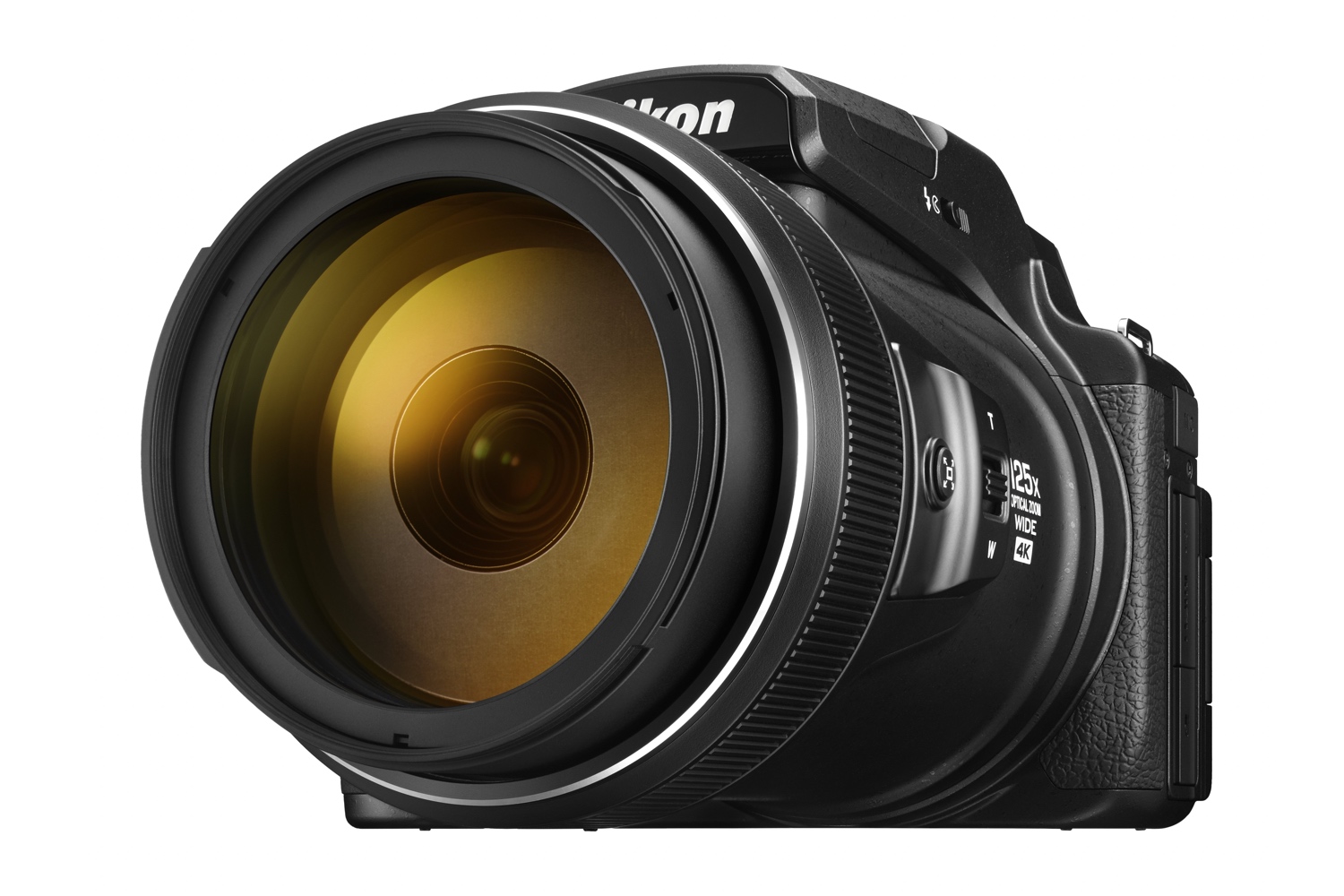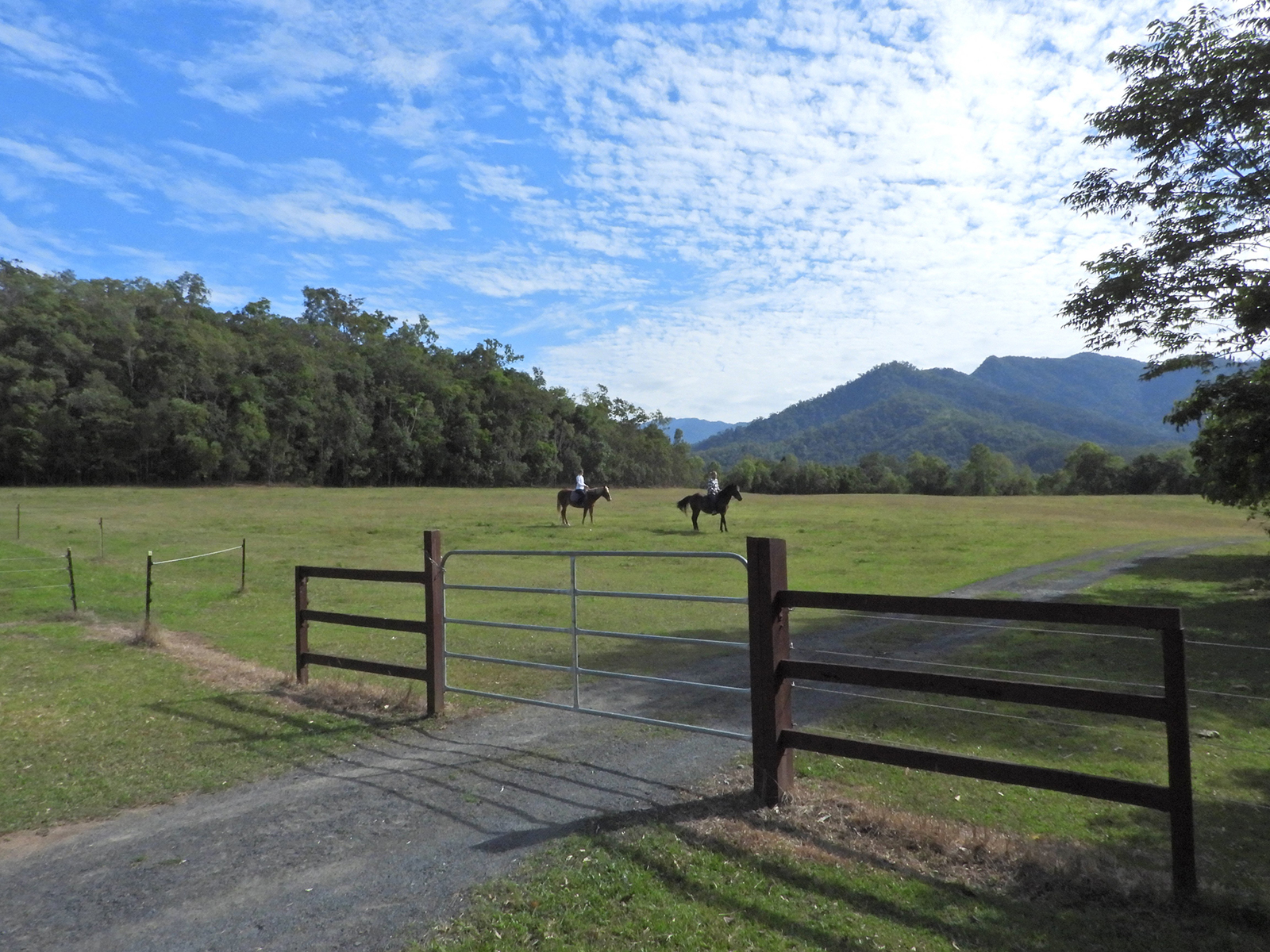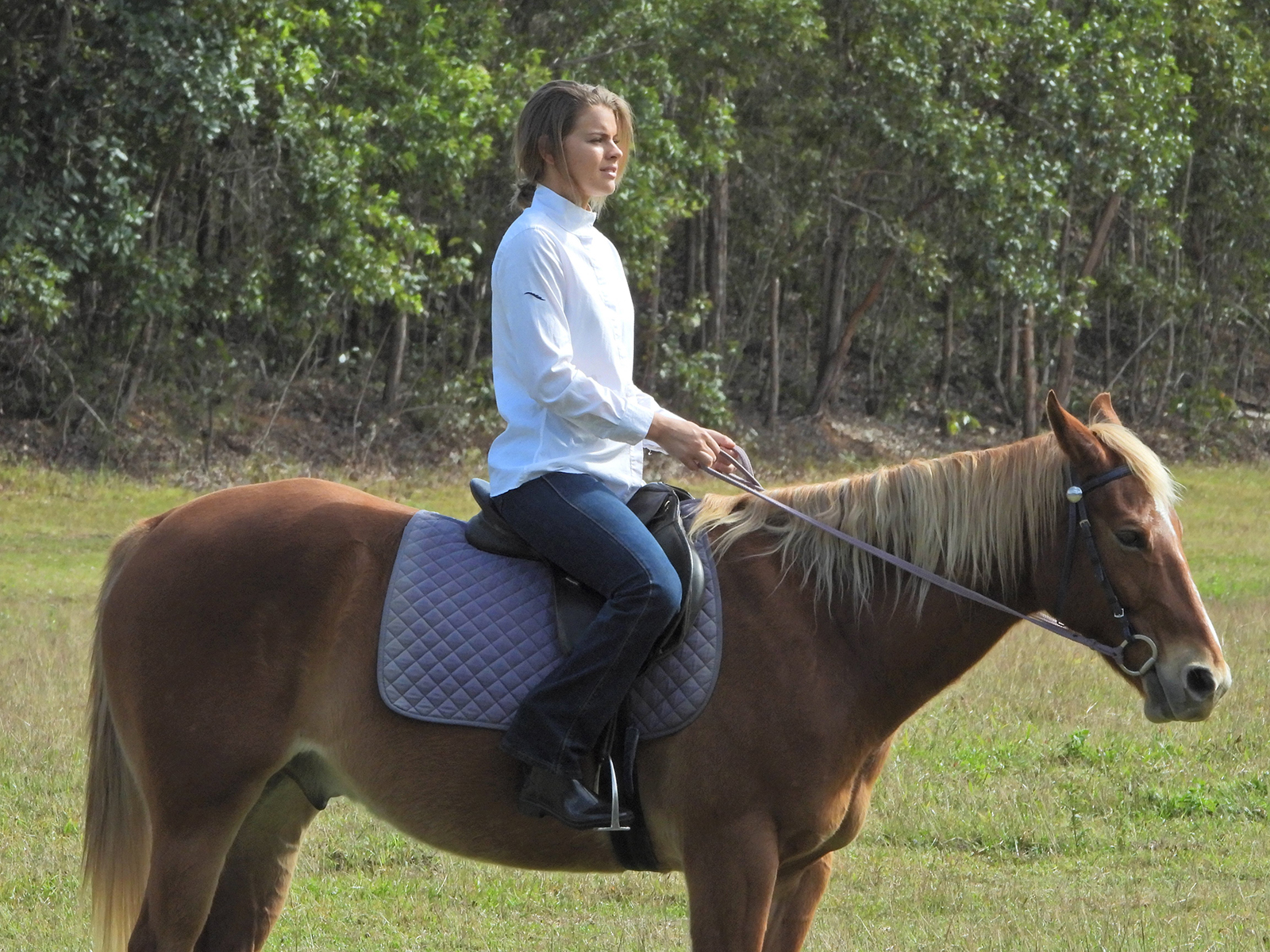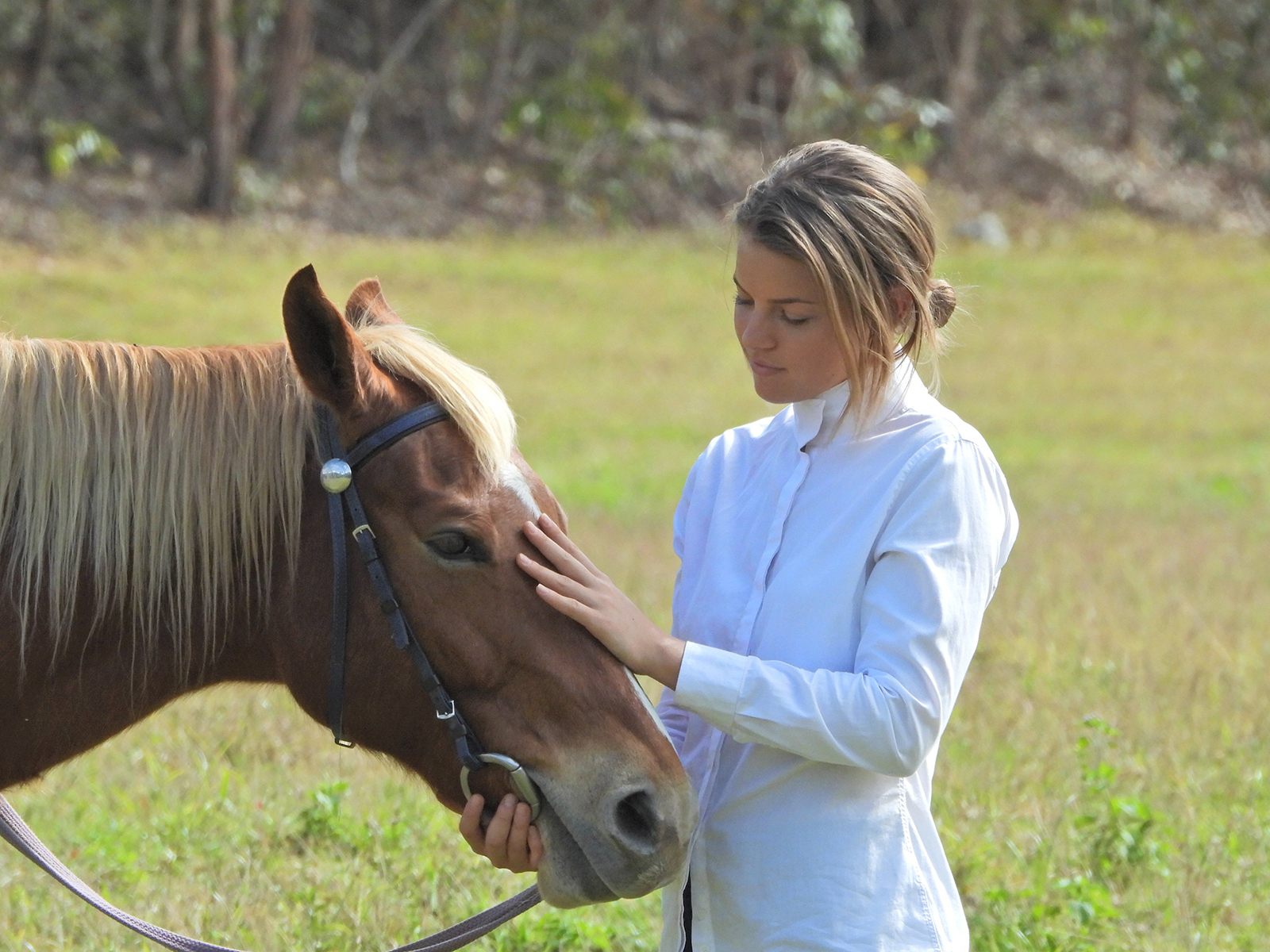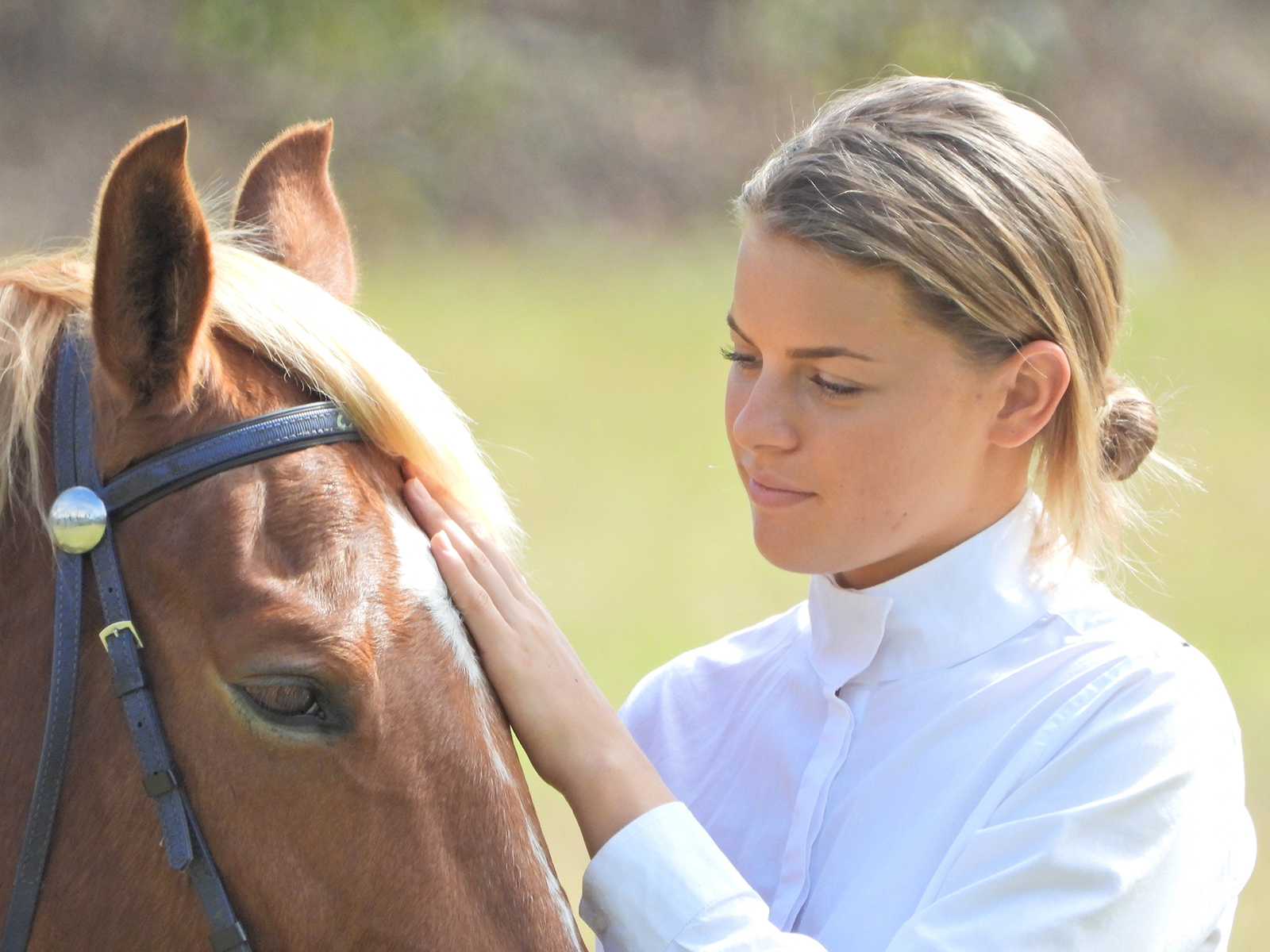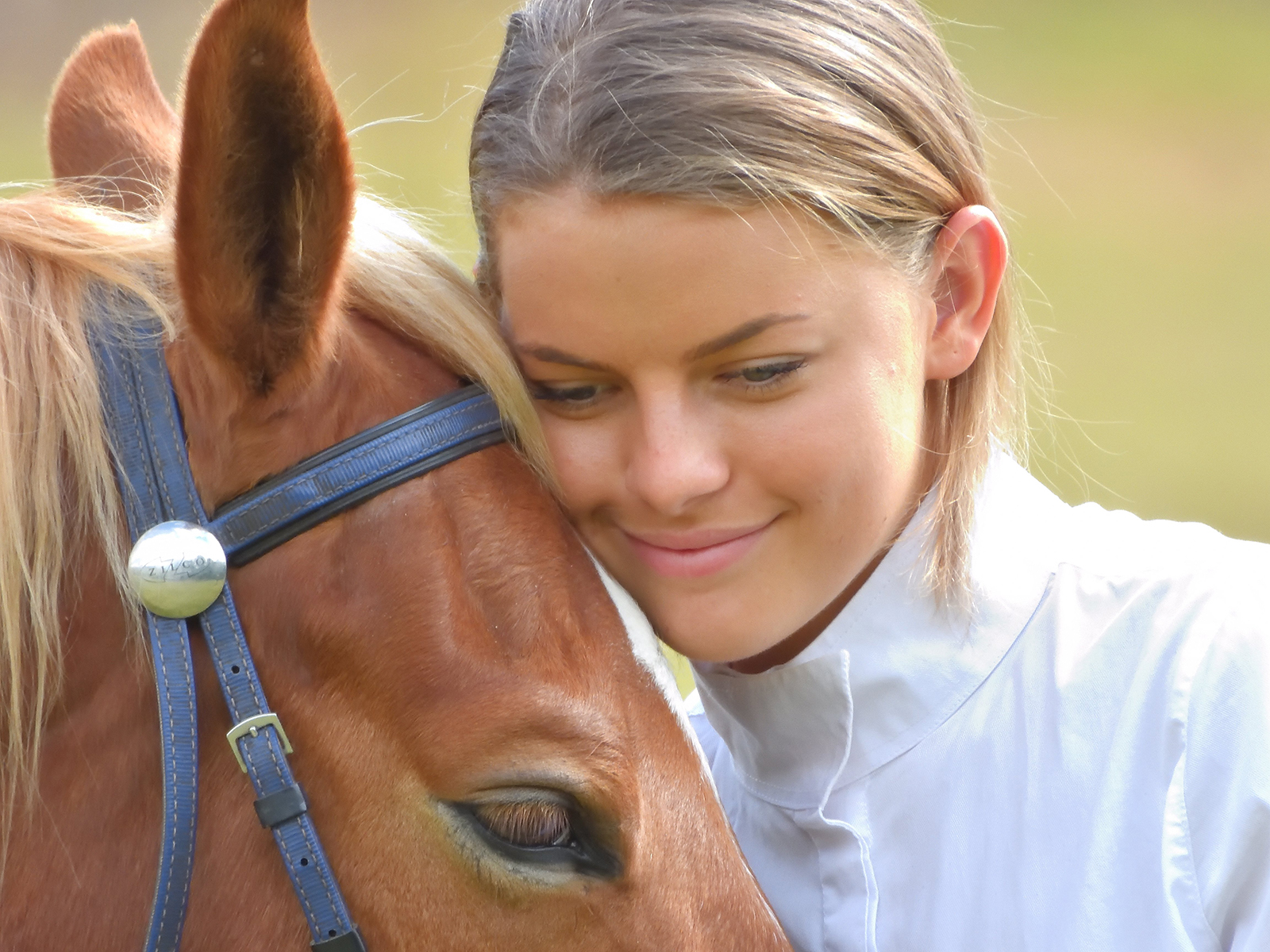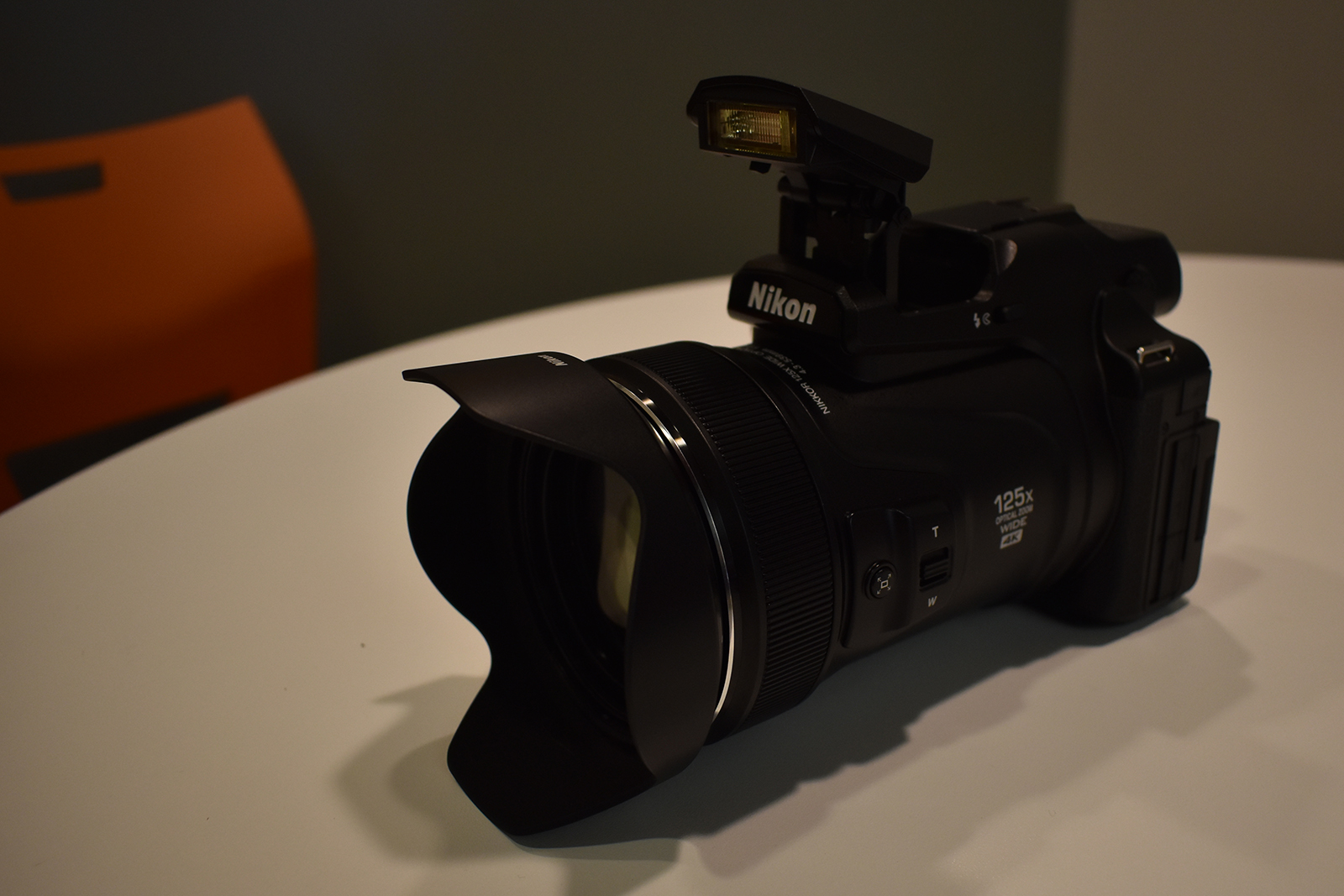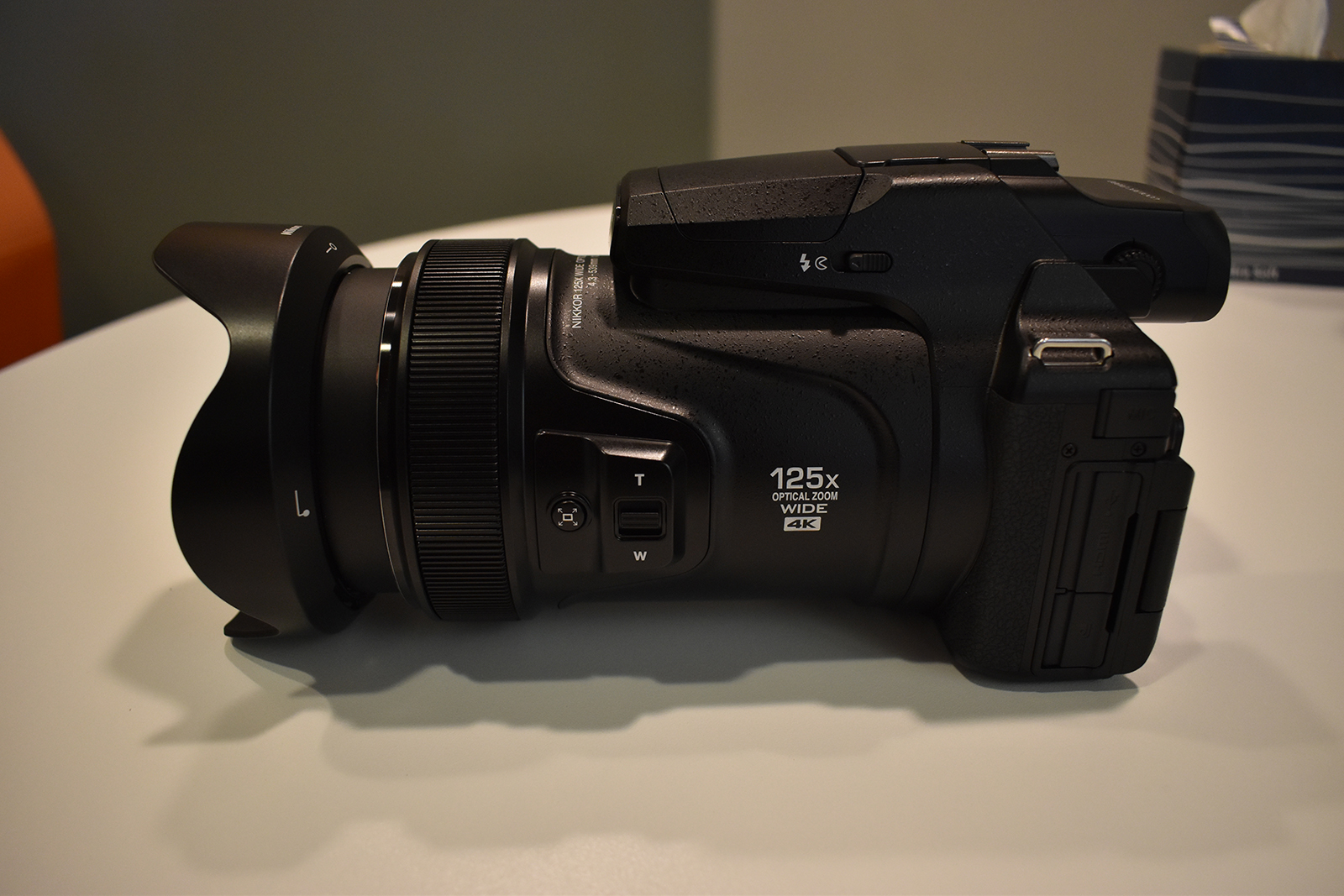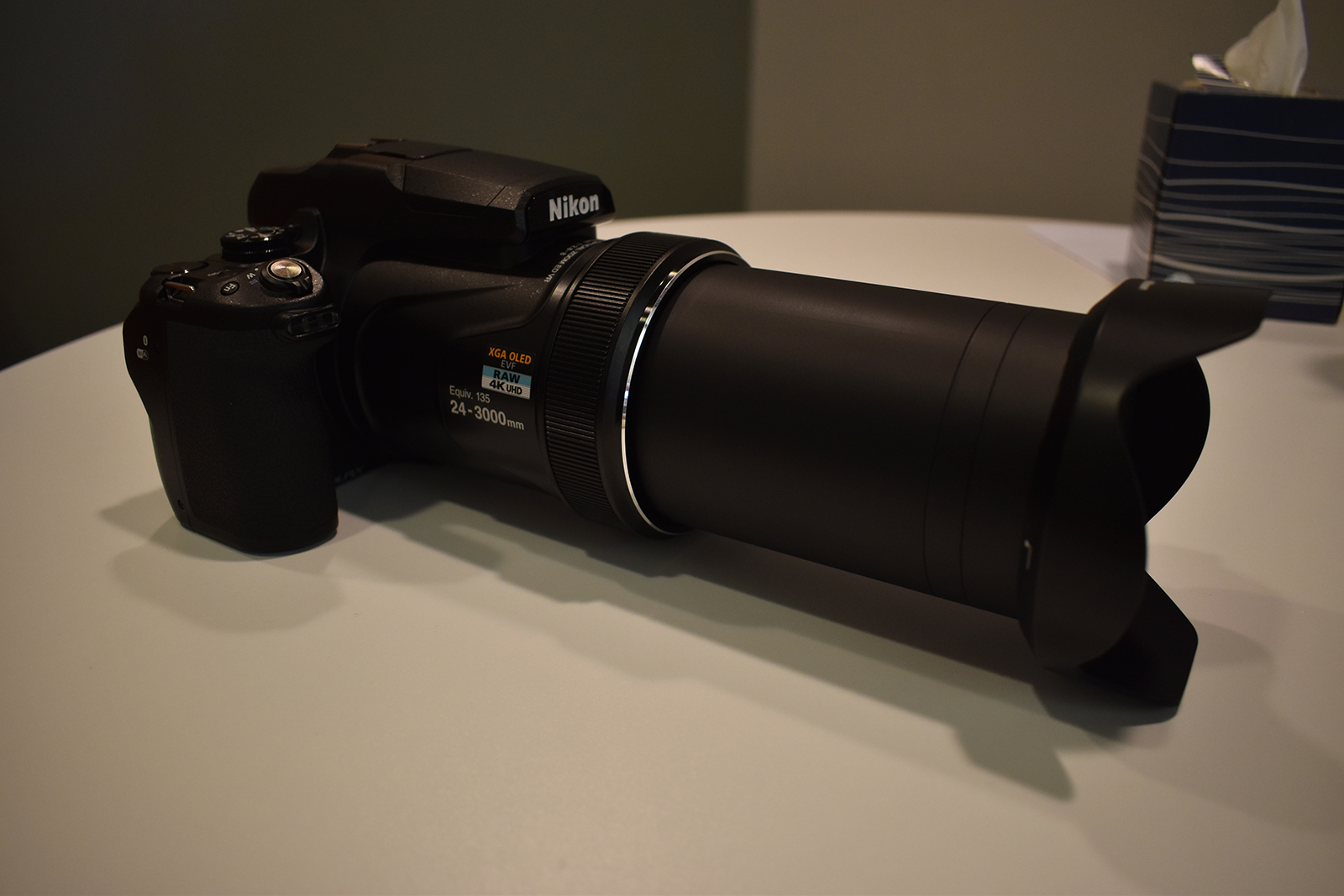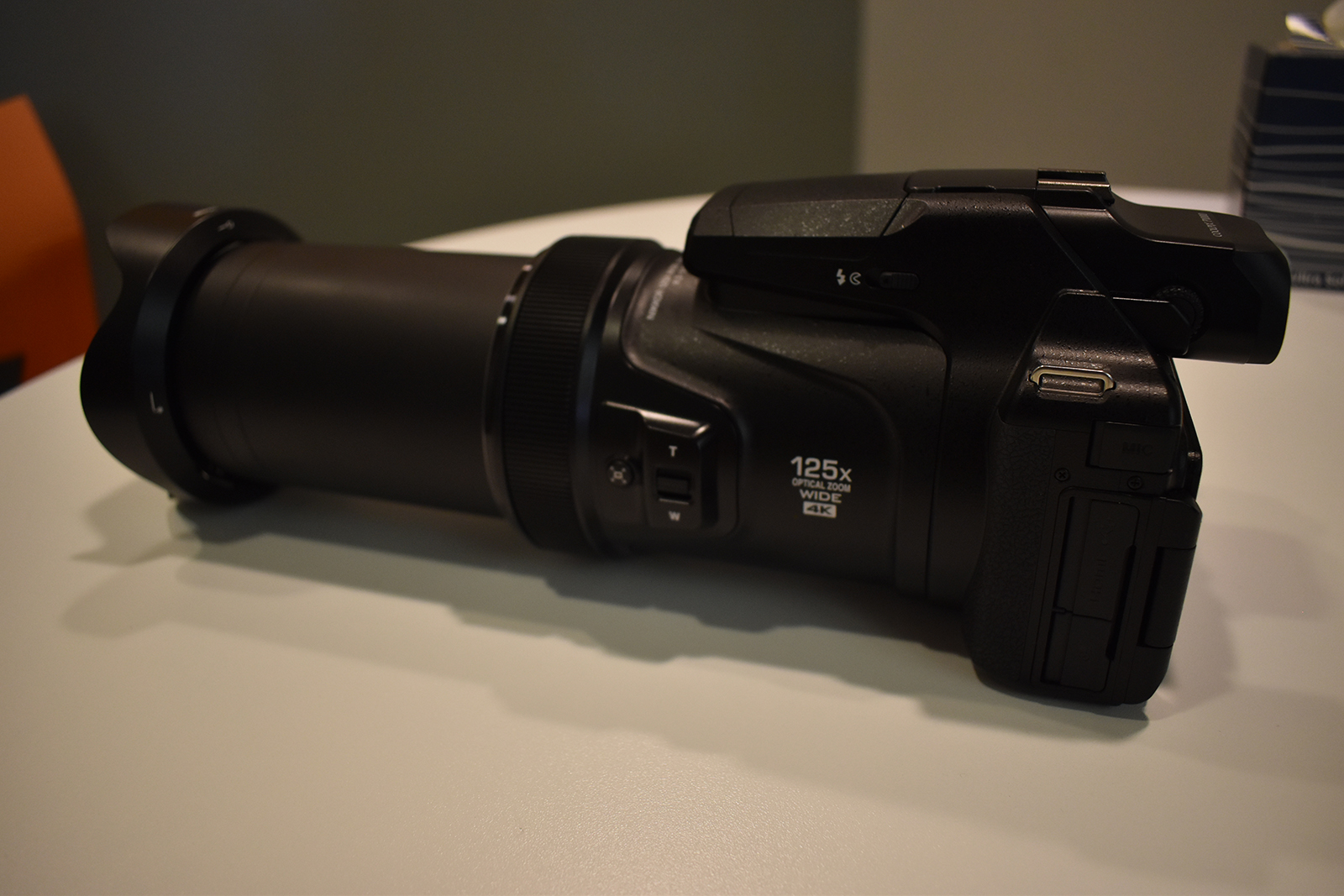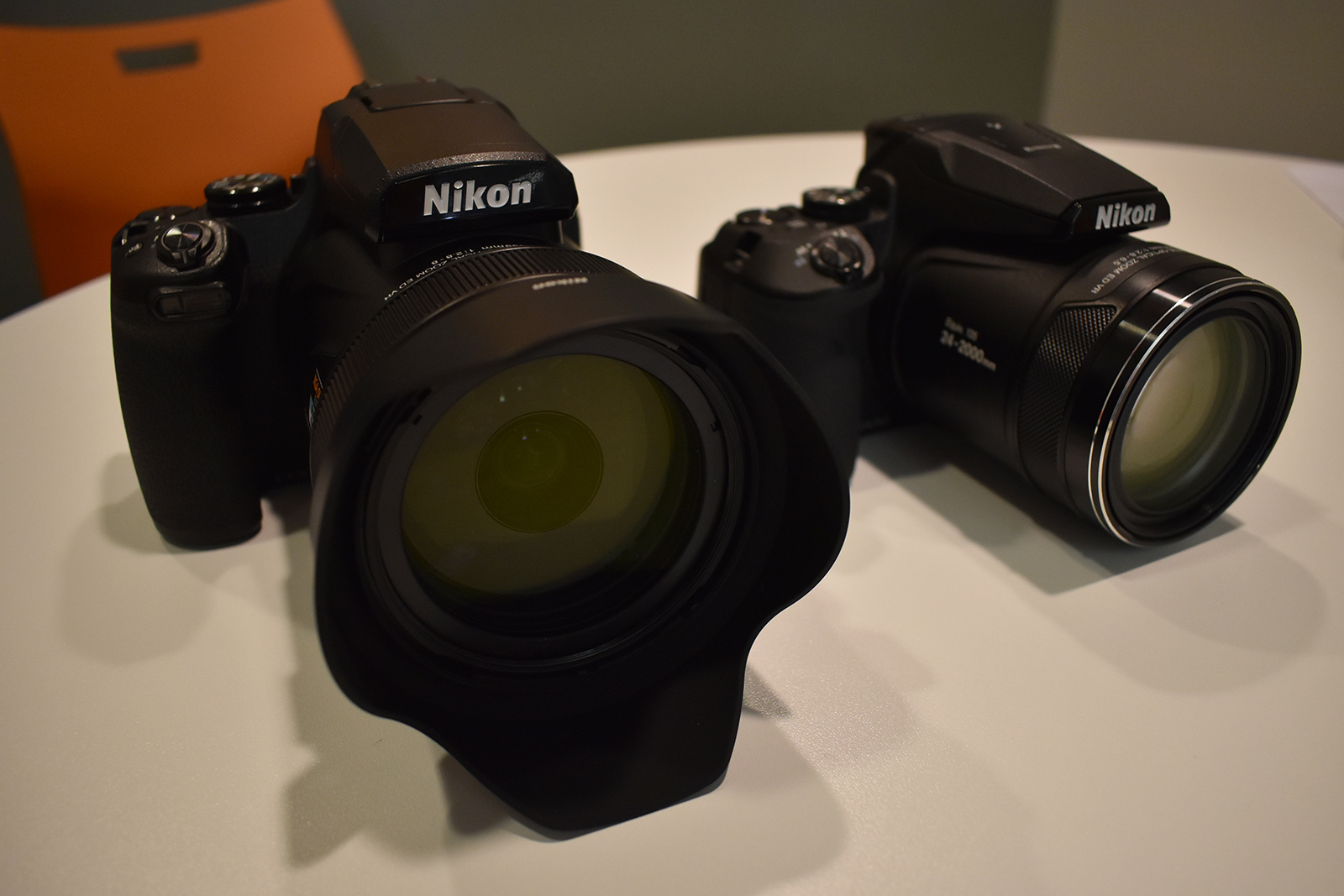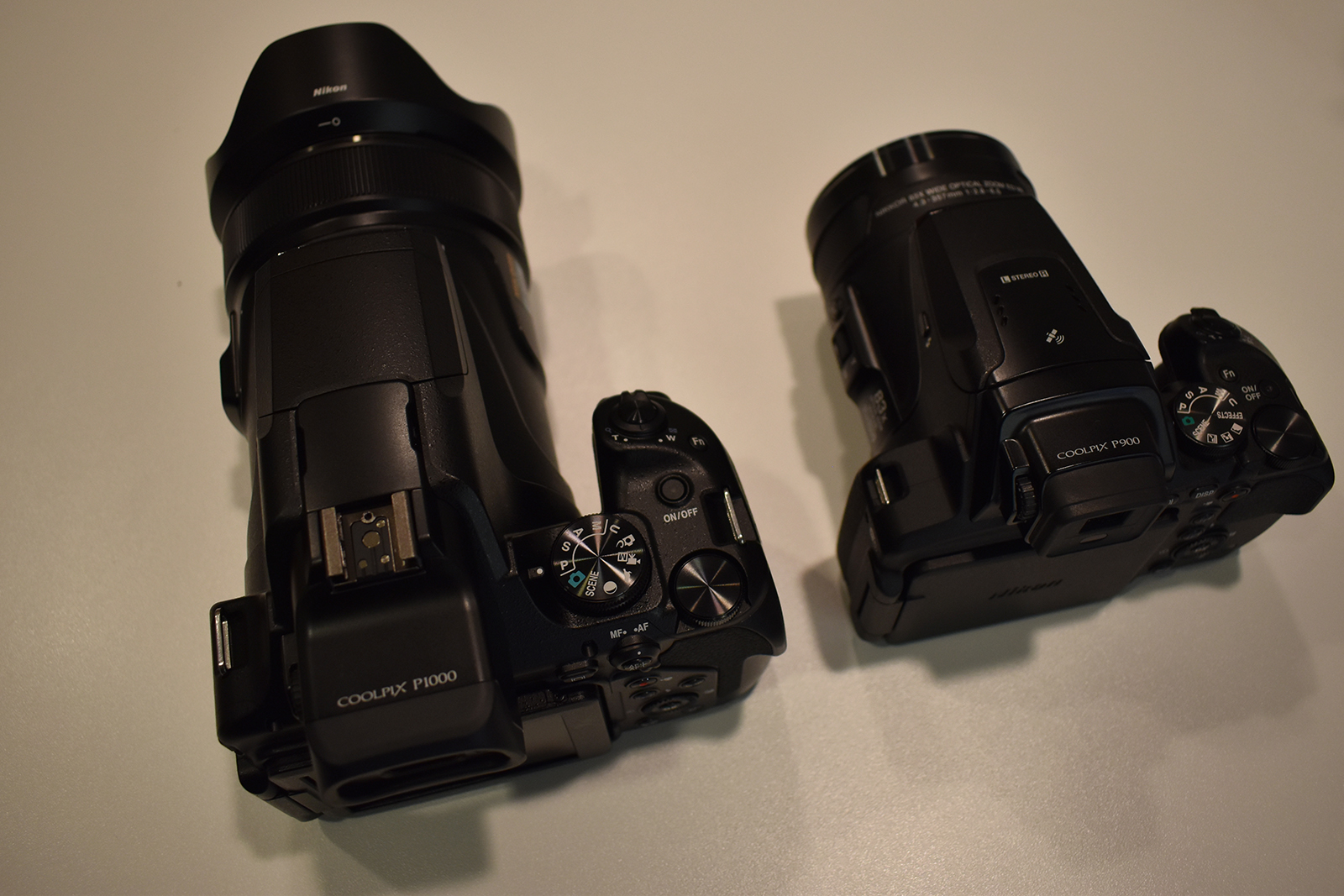What do you get when you cross a telescope with a camera? Probably something a lot like the new Nikon Coolpix P1000, a bridge camera with a 125x optical zoom lens that makes the lenses on most cameras look weak. Unveiled on July 10, the Nikon Coolpix P1000 sports a lens that covers the equivalent of 24-3,000mm lens on a full-frame DSLR, including a macro mode — if a 3,000mm telephoto lens for a DSLR existed, that is. Scheduled for a September release, the P1000 costs $1,000.
The 125x zoom lens has a bright f/2.8 aperture at the widest angle and an f/8 at the end of that long zoom. That’s enough to shoot from the nosebleed section of the stadium or capture details of the moon, Nikon says. The camera’s macro mode can shoot as close as 0.4 inches from the front of the lens at the wide-angle position. A snap-back mode button temporarily pulls back the zoom to make it easier to find the subject, before returning to full telephoto.
Large lenses are characteristically harder to hold steady, so Nikon has paired a Dual Detect Optical VR Technology system inside the camera, which gives the P1000 five stops of shake reduction. If there’s a downside to all that zoom, it’s probably that the large lens gives the camera a two-hands-required kind of body (it weighs 3 pounds, 2 ounces) that is probably best served with a tripod for the longest shots. Though, for what it’s worth, that’s still quite a bit smaller than what the equivalent optics on a DSLR would probably weigh.
That massive zoom lens is placed in front of an average-sized sensor, a 16 megapixel 1/2.3 inch sensor that uses a backlit design. Besides the 16-megapixel stills, the sensor is also capable of 4K at 30 fps, though with the usual 29-minute recording limit. The camera has a mic input for better audio capture, which is something you won’t find in most bridge cameras.
The P1000 also uses Nikon’s latest processor, capable of capturing stills at 7 frames per second, for up to a second. Nikon says the camera’s contrast detection autofocus system is also quick.
Despite the smaller sensor, the P1000 includes a handful of advanced features. RAW shooting is included along with manual modes, manual focus, and time-lapses. A hot shoe slot also allows the camera to use Nikon-compatible flashes. The ISO tops out at 6,400 and the shutter speed at 1/4,000. A handful of new auto modes cater to the camera’s long zoom, including a Moon Mode and Bird Watching Mode.
Besides packing in that beastly lens, the Nikon Coolpix P1000 also uses an electronic viewfinder with a 2.3 million OLED, paired with a 3.2-inch tilting TFT LCD screen. That larger body allows the camera to accommodate a control ring on the lens, which you can assign a function to, like aperture. Zoom, however, is controlled more like a compact camera than a DLSR, with a toggle by the shutter release or with buttons on the lens. Wi-Fi and Bluetooth are also built-in.
If Nikon is trying to turn heads with cameras with unheard of features, the P1000 will likely do the trick. The camera not only can shoot what a smartphone can’t, but it easily beats most mega-zoom cameras on the market. The 125x zoom is the longest zoom on a compact camera yet — and for that matter, finding a DSLR lens over 1000mm is tough. The 125x zoom may be a bit more niche than the average superzoom, with the extreme zoom coming in handy for birdwatching, astrophotography, and the like. (That unheard of zoom comes on the tail end of Nikon’s year-long 100th-anniversary celebration, which also included announcements like the Nikon D850.)
While we previewed the P1000 at a briefing, we have yet to put that 125x zoom through a real test. We know that longer zoom ranges can lose image quality at the longer end, though the Nikon-supplied samples seem to hold up for what we’d expect from a camera with a compact sensor. Design wise, the camera bears the attributes of a Nikon DSLR, video camcorder, and point-and-shoot. It has the weight, feel, and physical controls and buttons of a entry-level Nikon DSLR, but the onscreen menu controls are taken from a Coolpix point-and-shoot. The grip is quite substantial, giving us a firm grip on the camera. We do wish it had focus and zoom rings, but Nikon did include two zoom toggles: a fast zoom switch on the lens, and a more precise zoom control near the shutter button.
Despite the advanced functions, this is very much a point-and-shoot camera. That’s not to say it can’t capture great images and videos, but even with that incredibly long lens, advanced-level photographers may find the small sensor unappealing (there’s always Sony’s RX10 IV for those users). Long-zoom cameras are handy for travel photography, but the P1000 is too cumbersome. There could be an interesting potential with video, but until we get to use it in the field, we’ll reserve judgment.
The P1000 expands the crazy zoom length of the 83x superzoom Nikon Coolpix P900. But because the Nikon P1000 is much larger and more expensive than the earlier model, the older P900 — a very popular camera, Nikon says — isn’t being discontinued. Nikon sees different audiences for both cameras, but it acknowledges that the P1000 will be a very niche product.
A Bluetooth remote, the ML-L7, is also launching as an optional accessory for remotely controlling the camera, listing for $50. The remote release can control zoom, along with triggering a photo or video.
